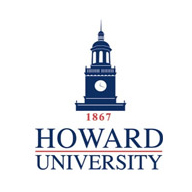Below is a summary of the abstract you submitted. Presenting author(s) is shown in bold.
If any changes need to be made, you can modify the abstract or change the authors.
You can also download a .docx version of this abstract.
If there are any problems, please email Dan at dar78@pitt.edu and he'll take care of them!
This abstract was last modified on March 30, 2022 at 4:19 p.m..

Bacteriophages, or phages, are viruses that infect bacteria. In this study, we present a mycobacteriophage – a phage that infects members of the genus Mycobacterium – that is being studied in Howard University’s SEA-PHAGES program. Phages that infect this host are important to study because of the close phylogenetic relationship between Mycobacterium smegmatis and Mycobacterium tuberculosis, which causes the disease tuberculosis. The aim of this project was to explore phage diversity through isolation and characterization of mycobacteriophages from soil samples collected on Howard University’s campus. Almost all the phages that were isolated were derived from an enrichment culture using the host M. smegmatis mc2 155. They were subjected to purification, high titer lysate generation, and DNA isolation. The genome of Funsized was one of four sent for sequencing. The Funsized genome was determined to belong to subcluster B9, and a member of Siphoviridae. Further, the genome has 71,351 base pairs and a G-C content of 70.2%. Currently, the genome is being annotated using PECAAN with a cutoff E-value of 10e-4 used for HHpred and BLASTp evaluations. Starterator, Glimmer, and GeneMark are being used to call starts. As of now, there are only four other sequenced and verified members of the B9 subcluster in the Actinobacteriophage Database. Acquiring and understanding genomic information from a wide variety of clusters, including those that are currently underrepresented, will help to further the study of bacteriophages and assist in our understanding of the evolutionary mechanisms by which bacteriophages have grown to be so diverse.
Key words: Mycobacteriophages, Soil, Mycobacterium smegmatis Siphoviridae.


